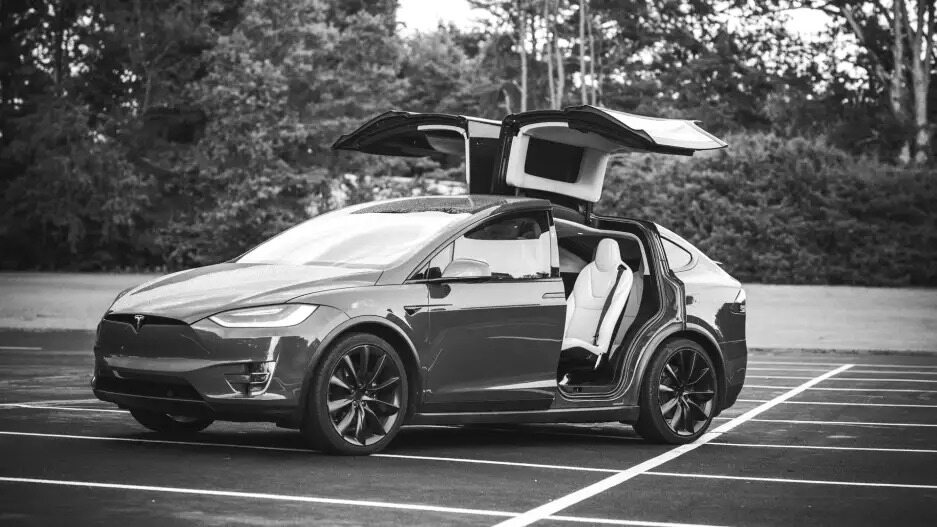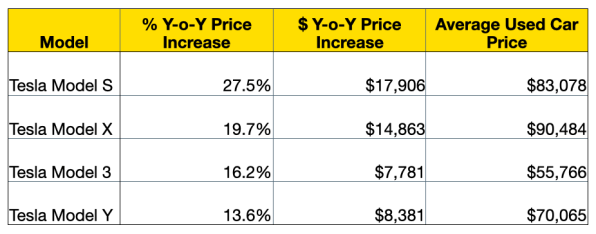- | 8:00 am
Used Teslas are in high demand—but selling them can be complicated
How much of your Tesla do you really own? Many of the upgrades and add-ons are software that the company says don’t transfer to a new owner.

Few companies, much less automotive companies, have a following quite as loyal as Tesla.
The sometimes cult-like devotion of buyers has created a market in which they will happily wait months to spend between $70,000 and $135,000 on a new vehicle and pay staggering amounts for a used one. But for people looking to sell their Teslas, it can sometimes be a complicated affair, as the software-based features of the car might not be transferable, raising the question of how much of the electric vehicle do they actually own.
The ability of Tesla vehicles to hold their value is unprecedented in the used car market, even when you account for the last few years, when prices have been off the chart. A Model 3 that’s one year old or less has seen its trade-in value jump 21.5% in the past year, according to ISeeCars.com, which tracks used car prices. A two- to three-year-old Model 3’s value is up 18%. Newer Model S’s have seen their resale value jump 36.4%, while an eight-year-old Model S has seen a 28.8% resale value increase in the past year.
While the delta between newer and older Tesla models is surprisingly close, things really get interesting when you look at the Model X. Karl Brauer, executive analyst at ISeeCars, says a one-year-old model has seen a 12.8% increase in the past year, but a five-year-old one is up 18.1%—while a four-year-old one was up 21.3%.
“People want a Model X, and they don’t seem to care what the age is,” he tells Fast Company. “They don’t feel it was a big deal to get a newer one.”

If you’re a Tesla owner looking to sell your car, though, the process is not quite as cut-and-dried as it is to get rid of, say, your Toyota. For instance, in its sales contract, the company includes a clause that reads, “Tesla and its affiliates sell cars directly to end-consumers, and we may unilaterally cancel any order that we believe has been made with a view toward resale of the Vehicle or that has otherwise been made in bad faith.”
That won’t affect most sellers. But if the company thinks you’ve ordered a new one only to immediately resell it for a higher price once you take possession, it reserves the right to not only cancel the sale, but also add you to the “do not sell” list.
Assuming you’re not an EV flipper, that shouldn’t be a problem. You’ll still have to take a few more steps than you would to sell a used gas-powered vehicle, however—like updating the car’s software.
You’ll also need to remove ownership of the vehicle from your Tesla account. This may involve paying any outstanding Supercharging balance; and should you have any Supercharging credits, those will not transfer with the vehicle. Ditto, some upgrades and a few other features as well.
As for whether Full Self-Driving (FSD) is one of those transferable features, that’s something of a gray area right now. Buying the feature costs $15,000, following a recent $3,000 price hike. And the subscription model runs as high as $199 per month.
If you’re on the subscription model, the new owner will have to get their own plan. (And you likely won’t get a credit for any portion of the unused month.)
If you opted for the paid-in-full package, though, the best way to ensure it transfers is via a private direct sale to the new owner. Selling through a dealer might transfer the FSD to the next owner, but some say it’s not guaranteed.
One thing is certain: The FSD you purchased for your Tesla won’t transfer to the next one, assuming you’re looking to upgrade to a newer model. You’ll need to buy the software again at that point. And any Tesla vehicle considered salvage will have Supercharging disabled and FSD removed for safety reasons.
Tesla has, in the past, deactivated features in cars sold via third-party dealers, though the company did return them after public outcry. And earlier this year, it reportedly forced the buyer of a used 2013 Model S to pay $4,500 to unlock the vehicle’s full range.
This is the side effect of cars becoming as much a computers as a vehicle, making it a stressful process for both buyer and seller. And yet, it’s doing nothing to impact demand for the vehicles. In July, the average used Model S sold for $83,078, says ISeeCars, an increase of nearly $18,000 from the same period a year ago.
“Tesla has cultivated an Apple-like buyer base—and there’ a lot of passion for the brand among this group,” says Brauer. “Whether that group is wealthy enough to afford a brand new one or has to wait until there’s a used one . . . there just seems to be plenty of buyers for Teslas.”








































